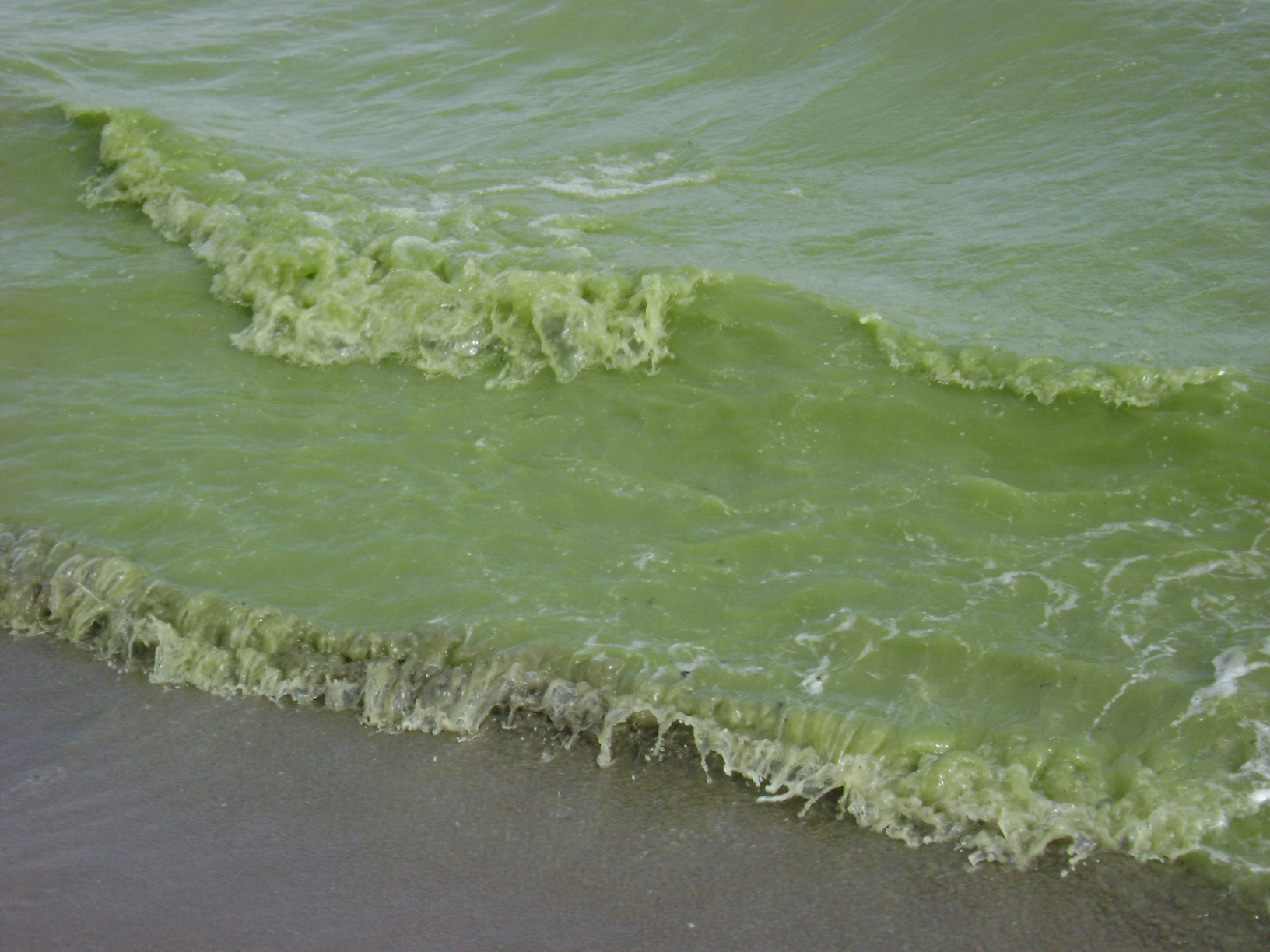Be aware of beach/river water. If it appears bright green or pea soup in colour you need to know this:
Blue-green algae are tiny plants that live in fresh water. Normally blue-green algae are barely visible, but, during warm weather, they can quickly increase to form a large mass called a bloom. Blooms most commonly occur during the late summer and early fall. These blooms occur naturally in fresh water around the world. Blooms have been reported in various locations throughout Ontario. High levels of phosphorus and nitrogen in surface waters can increase the growth of blue-green algae.
How can I recognize a blue-green algae bloom?
- Dense blue-green algae blooms may make the water look like bluish-green pea soup.
- When the bloom is very large, algae may form solid looking clumps.
- Fresh blooms often smell like freshly cut grass; older blooms smell like rotting garbage.
What are the potential health effects associated with blue-green algae toxins?
- Itchy, irritated eyes and skin that may result from direct contact such as swimming.
- If you swallow these toxins, symptoms such as headaches, fever, diarrhea, abdominal pain, nausea, and vomiting are possible. Usually people won’t drink water contaminated with blue-green algae blooms because of its unsightly pea soup appearance and foul smell.
How do I protect myself?
- Avoid activities that increase the chance of exposure to these algae blooms
- Don’t drink, bathe, or shower in untreated surface water.
- Don’t allow children, pets and livestock to drink or swim in the water.
- Don’t boil the water. Boiling may release more toxins into the water.
- Be cautious about eating fish caught where blue-green algae blooms occur; Do not eat the liver, kidneys and other organs.
- Don’t treat the water with a disinfectant like chlorine (bleach). This may break open algae cells and release toxins into the water.
How does the Chatham-Kent water treatment plant deal with Blue-green Algae (Cyanobacteria)?
- The Chatham-Kent municipal water treatment plant regularly tests for Cyanobacteria toxins in the water supply. To date they have not detected any of these toxins in our water supply.
- If Cyanobacteria are detected in the water supply, treatment plants can remove them in a number of ways.
For more information on Blue-green Algae CLICK HERE.

